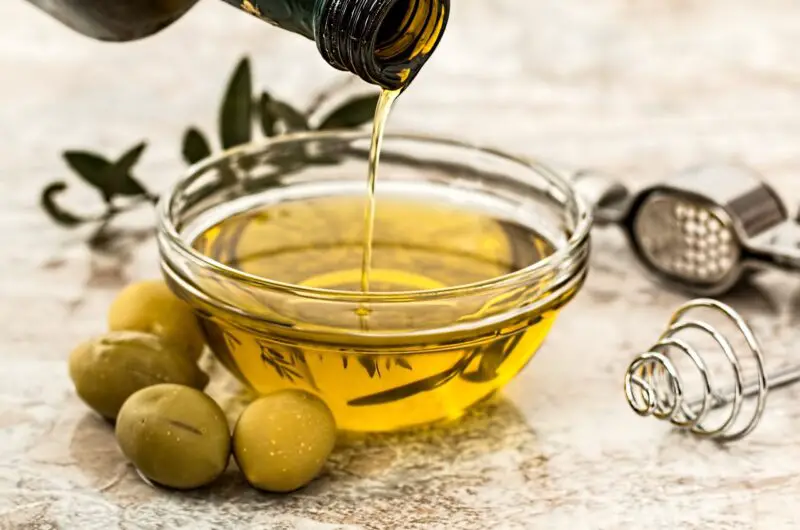Olive oil is one of the most celebrated and widely used oils in the world, lauded for its flavor, versatility, and health benefits. Yet, amidst growing discussions about cooking oils—particularly the debate over seed oils—confusion often arises: Is olive oil a seed oil? To answer this question thoroughly, we must examine the definitions of seed oils and olive oil, their botanical origins, production methods, nutritional profiles, and the broader context of how they’re perceived in modern diets. Spoiler alert: Olive oil is not a seed oil, but the reasons why are worth exploring in depth.
Defining Seed Oils
Seed oils are a category of vegetable oils extracted from the seeds of plants. Common examples include canola oil (from rapeseed), sunflower oil, soybean oil, corn oil, and grapeseed oil. These oils are typically produced from crops where the seed is the primary oil-bearing component. The extraction process often involves mechanical pressing, followed by solvent extraction (using chemicals like hexane) to maximize yield, and refining steps such as bleaching and deodorizing to create a neutral, shelf-stable product.
Seed oils have become a focal point in nutritional debates due to their high content of polyunsaturated fatty acids (PUFAs), particularly omega-6 fatty acids like linoleic acid. Critics argue that the industrialization of seed oil production and their ubiquity in processed foods contribute to health issues, such as inflammation, when consumed in excess. Proponents, however, point to their affordability, versatility, and role in providing essential fatty acids. Regardless of where one stands in this debate, the term “seed oil” is botanically and industrially specific—it applies to oils derived from seeds, not other plant parts.
Olive Oil: A Fruit Oil, Not a Seed Oil
Olive oil, by contrast, is not extracted from seeds but from the fruit of the olive tree (Olea europaea), a species native to the Mediterranean Basin. Specifically, olive oil comes from the fleshy part of the olive, known as the mesocarp, which surrounds the hard pit or stone (the seed). While the pit contains a small amount of oil, it’s the pulp of the fruit that yields the vast majority of olive oil—typically 90% or more of the total oil content.
Botanically, olives are classified as drupes, a type of stone fruit similar to cherries, peaches, or plums. In drupes, the seed is encased within a hard endocarp (the pit), while the edible or oil-rich portion is the surrounding flesh. This distinction is key: olive oil is a fruit oil, not a seed oil. The seed itself is not the target of oil extraction in commercial olive oil production, though it may contribute trace amounts during pressing.
To illustrate, consider the composition of an olive: the fruit is roughly 10-30% oil by weight, depending on the variety, ripeness, and growing conditions. This oil is stored in the vacuoles of the mesocarp cells, not in the seed. When olives are pressed, the oil is released from the fruit pulp, leaving the pit largely intact. This fundamental difference in origin sets olive oil apart from seed oils like sunflower or canola, where the seed is the sole source of oil.
Production Processes: Olive Oil vs. Seed Oils
The methods used to produce olive oil further distinguish it from seed oils. Extra virgin olive oil (EVOO), the highest quality grade, is made through a purely mechanical process. Whole olives are harvested, washed, crushed into a paste (pits included), and then pressed or centrifuged to separate the oil from the water and solids. No heat or chemicals are used, preserving the oil’s natural flavors, antioxidants, and nutrients. This cold-pressing technique is a hallmark of premium olive oil and contrasts sharply with the industrial processes typical of seed oils.
Lower-grade olive oils, such as virgin olive oil or refined olive oil, may undergo additional filtration or mild refining, but these steps are still less intensive than those used for most seed oils. For example, pomace olive oil—extracted from the leftover pulp and pits after the initial pressing—requires solvents like hexane, similar to seed oil production.
However, pomace oil represents a small fraction of olive oil output and is considered distinct from the fruit-derived virgin oils that dominate the market.
Seed oils, on the other hand, often require more aggressive extraction. Seeds like soybeans or sunflower seeds contain less oil by weight (typically 20-40%) than olives, so mechanical pressing alone isn’t always sufficient. Solvent extraction boosts yields, but it also strips away some natural compounds, necessitating refining to remove impurities and off-flavors. The result is a highly processed oil with a neutral taste, unlike the robust, fruity profile of extra virgin olive oil. This divergence in production reinforces the classification: olive oil’s fruit-based, minimally processed nature aligns poorly with the seed oil paradigm.
Nutritional Profiles: A Tale of Fats
Nutritionally, olive oil and seed oils differ in ways that reflect their origins and processing. Olive oil is renowned for its high monounsaturated fatty acid (MUFA) content, primarily oleic acid, which makes up 55-83% of its total fat. It also contains smaller amounts of saturated fats (around 14%) and PUFAs (5-15%), with a low omega-6-to-omega-3 ratio.
This fatty acid profile, combined with its rich antioxidant content—polyphenols, vitamin E, and squalene—underpins olive oil’s association with heart health, reduced inflammation, and longevity in the Mediterranean diet.
Seed oils, by contrast, are typically higher in PUFAs, especially omega-6 fatty acids. For instance, sunflower oil can contain up to 65% linoleic acid, while soybean oil hovers around 50%. These oils have minimal MUFAs and often lack the antioxidants found in unrefined olive oil due to refining. While PUFAs are essential in moderation, the modern diet’s overabundance of omega-6s from seed oils, coupled with low omega-3 intake, has raised concerns about chronic inflammation and oxidative stress.
Does this mean olive oil is inherently “better” than seed oils? Not necessarily—it depends on context. Olive oil’s stability at moderate cooking temperatures (thanks to its MUFAs and antioxidants) makes it ideal for sautéing or dressings, while high-PUFA seed oils are more prone to oxidation when heated. However, refined seed oils like canola can withstand higher temperatures due to processing tweaks, making them suited for frying. Nutritionally and culinarily, olive oil stands apart, but its fruit-derived composition is what definitively excludes it from the seed oil category.
Misconceptions and Semantic Confusion
So why does the question “Is olive oil a seed oil?” even arise? Part of the confusion stems from the olive’s pit. Because the pit is a seed in botanical terms, and because it’s crushed along with the fruit during pressing, some assume olive oil qualifies as a seed oil. However, this overlooks the fact that the pit contributes negligibly to the oil yield—less than 10% in most cases—and isn’t the primary target of extraction. In seed oils, the seed is the whole game; in olive oil, it’s a minor player.
Another source of confusion is the broad use of “vegetable oil” as a catch-all term. In supermarkets, olive oil is sometimes shelved alongside seed-derived vegetable oils, blurring the lines for consumers. Marketing can muddy the waters further—terms like “pure” or “light” olive oil (which refer to refining, not fat content) might suggest parallels with the neutral, refined profiles of seed oils. Yet, botanically and technically, olive oil remains a fruit oil, distinct from the seed-based cohort.
The anti-seed-oil movement also plays a role. As skepticism toward industrial seed oils grows—fueled by concerns over processing, omega-6 excess, and health impacts—olive oil is often championed as a “safe” alternative. This juxtaposition can lead to oversimplification, where all oils are judged through a seed-oil lens, prompting questions about olive oil’s classification. While olive oil’s merits are well-supported, its exemption from the seed oil label isn’t just a matter of virtue—it’s a matter of fact.
Cultural and Historical Context
Olive oil’s identity as a fruit oil is deeply tied to its history. For over 6,000 years, Mediterranean cultures have cultivated olive trees, pressing their fruit for oil used in cooking, medicine, and rituals. This tradition predates the industrial revolution that birthed modern seed oils like canola or corn oil, which emerged in the 19th and 20th centuries as agriculture scaled up and refining technologies advanced. Olive oil’s artisanal roots and minimal processing reflect its fruit-based essence, while seed oils epitomize industrialized efficiency.
In culinary terms, olive oil’s fruitiness—whether peppery, grassy, or buttery—sets it apart from the neutral seed oils designed for mass production. Chefs prize extra virgin olive oil for its flavor, not just its fat, a quality that refining erases from most seed oils. This sensory distinction reinforces the botanical one: olive oil is the juice of a fruit, not the extract of a seed.
Conclusion: Olive Oil Stands Apart
Is olive oil a seed oil? No. It’s a fruit oil, derived from the pulp of the olive drupe, not its seed. This distinction holds true across its botanical origins, production methods, nutritional makeup, and cultural legacy. While the olive pit is technically a seed, its role in oil production is incidental, dwarfed by the fruit’s contribution. Seed oils, conversely, rely entirely on seeds, processed through industrial means that diverge from olive oil’s traditional craft.
The question reflects broader curiosity about oils in our diets, spurred by debates over health, processing, and sustainability. Olive oil’s exclusion from the seed oil category doesn’t automatically make it superior—it’s simply different, with its own strengths and uses. Understanding this difference empowers us to navigate the oil aisle with clarity, appreciating olive oil for what it is: a fruit’s gift, not a seed’s legacy.
General References
- Botanical and Agricultural Sources
- International Olive Council (IOC). “Olive Oil Production and Composition.” Available at: www.internationaloliveoil.org
- Provides detailed insights into olive oil’s botanical origins and production processes.
- Food and Agriculture Organization (FAO). “Olive Cultivation and Oil Production.” Available at: www.fao.org
- Offers data on olive trees (Olea europaea) and their classification as drupes.
- International Olive Council (IOC). “Olive Oil Production and Composition.” Available at: www.internationaloliveoil.org
- Nutritional Science
- Kris-Etherton, P. M., et al. (2014). “Monounsaturated Fatty Acids and Risk of Cardiovascular Disease.” Circulation, American Heart Association.
- Discusses the health benefits of monounsaturated fats, like those in olive oil.
- Harvard T.H. Chan School of Public Health. “Fats and Cholesterol.” Available at: www.hsph.harvard.edu/nutritionsource/what-should-you-eat/fats-and-cholesterol/
- Explains fatty acid profiles of various oils, including olive oil and seed oils.
- Kris-Etherton, P. M., et al. (2014). “Monounsaturated Fatty Acids and Risk of Cardiovascular Disease.” Circulation, American Heart Association.
- Oil Production and Processing
- Frankel, E. N. (2011). Chemistry of Extra Virgin Olive Oil: Adulteration, Oxidative Stability, and Antioxidants. Journal of Agricultural and Food Chemistry.
- Covers the mechanical extraction process of olive oil and its chemical properties.
- Gunstone, F. D. (2011). Vegetable Oils in Food Technology: Composition, Properties and Uses. Wiley-Blackwell.
- Details the industrial extraction and refining of seed oils like canola and sunflower.
- Frankel, E. N. (2011). Chemistry of Extra Virgin Olive Oil: Adulteration, Oxidative Stability, and Antioxidants. Journal of Agricultural and Food Chemistry.
- Culinary and Historical Context
- Davidson, A. (2014). The Oxford Companion to Food. Oxford University Press.
- Chronicles the history of olive oil in Mediterranean diets and its cultural significance.
- Toussaint-Samat, M. (2009). A History of Food. Wiley-Blackwell.
- Explores the ancient origins of olive oil production versus the modern emergence of seed oils.
- Davidson, A. (2014). The Oxford Companion to Food. Oxford University Press.
- Scientific Studies on Seed Oils
- Simopoulos, A. P. (2008). “The Importance of the Omega-6/Omega-3 Fatty Acid Ratio in Cardiovascular Disease and Other Chronic Diseases.” Experimental Biology and Medicine.
- Analyzes the nutritional implications of high omega-6 intake from seed oils.
- Ramsden, C. E., et al. (2013). “Use of Dietary Linoleic Acid for Secondary Prevention of Coronary Heart Disease and Death.” British Medical Journal.
- Investigates the health impacts of polyunsaturated fats in seed oils.
- Simopoulos, A. P. (2008). “The Importance of the Omega-6/Omega-3 Fatty Acid Ratio in Cardiovascular Disease and Other Chronic Diseases.” Experimental Biology and Medicine.
- Web and Public Resources
- United States Department of Agriculture (USDA). “Nutrient Data Laboratory.” Available at: www.usda.gov
- Provides compositional data on olive oil and seed oils.
- Olive Oil Times. “Olive Oil Basics.” Available at: www.oliveoiltimes.com
- A reputable source for olive oil production, varieties, and industry standards.
- United States Department of Agriculture (USDA). “Nutrient Data Laboratory.” Available at: www.usda.gov


















